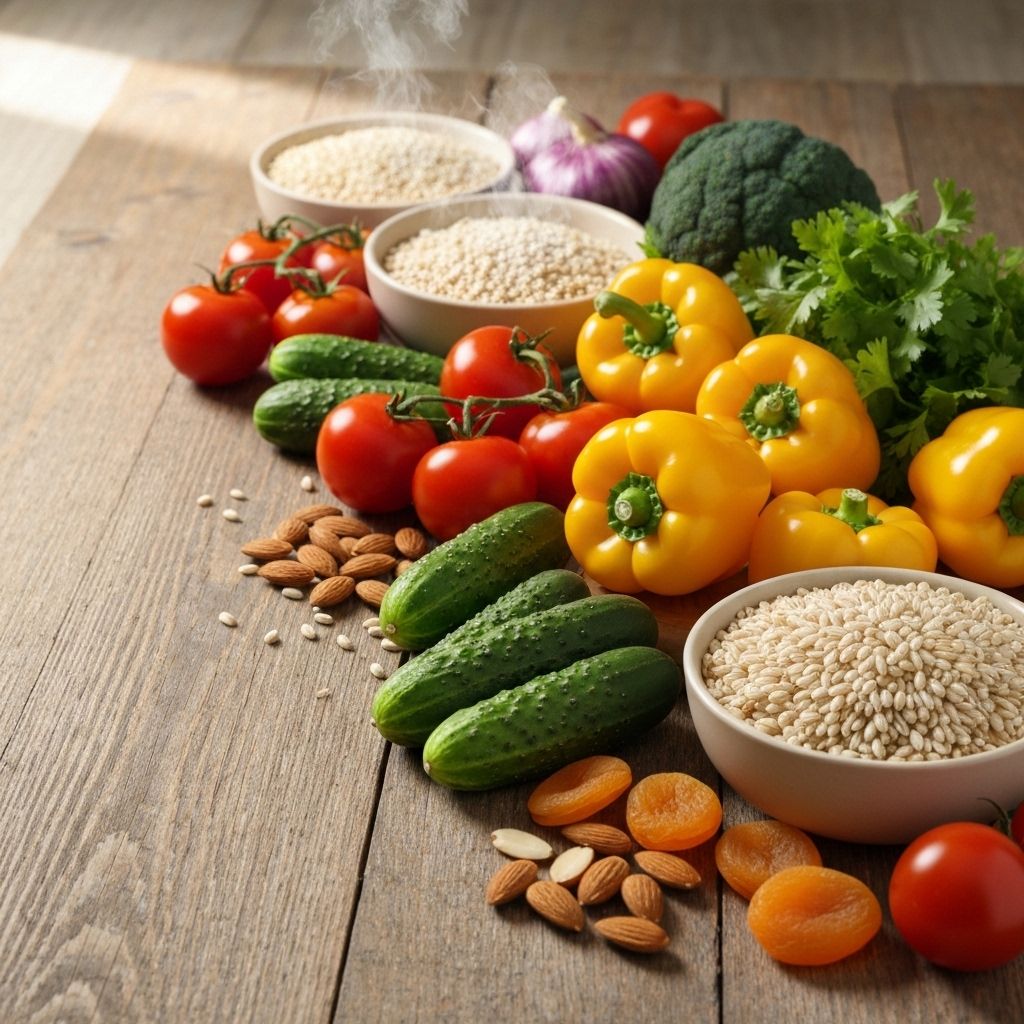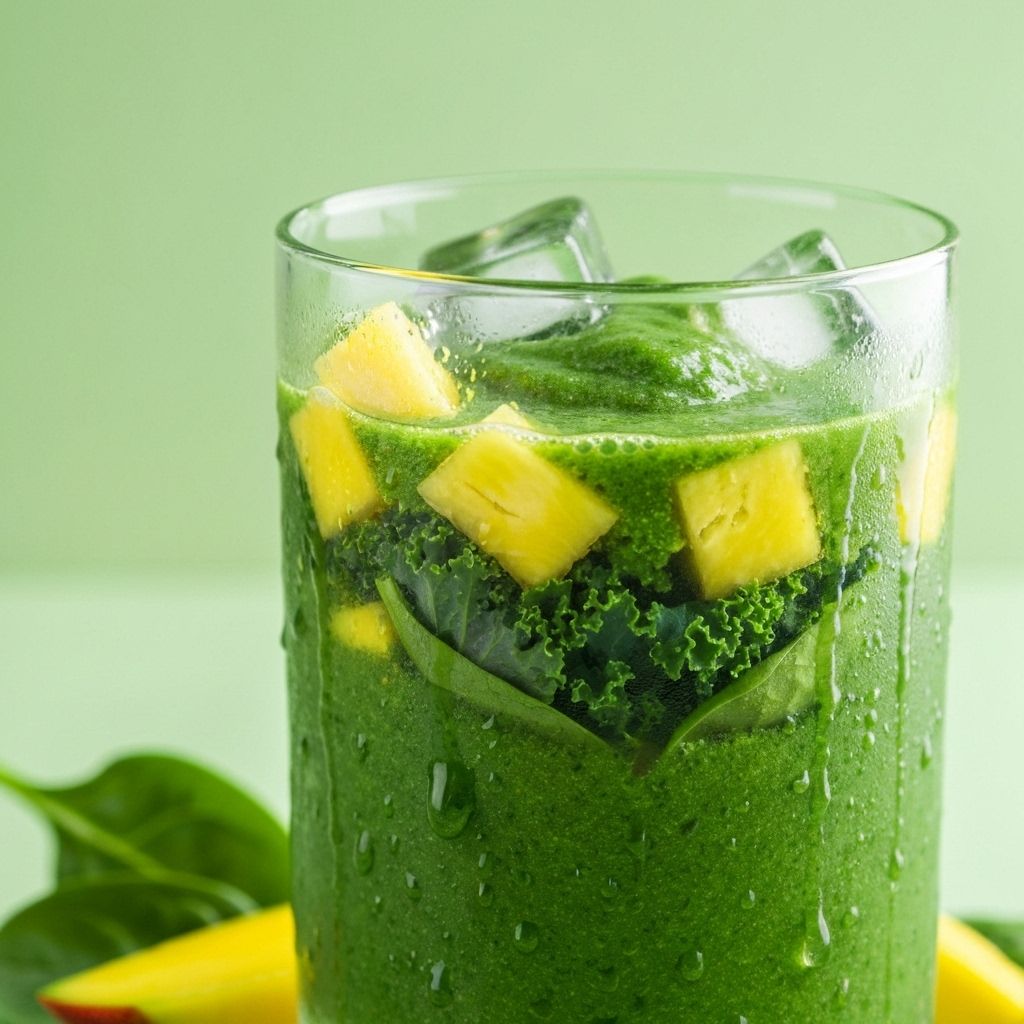Diet: Eating Right for Diabetes Reversal
Proper nutrition is the foundation of diabetes reversal. Learn how to nourish your body with foods that support healthy blood sugar levels and metabolic health.

Key Dietary Principles
The right diet can be transformative for people with Type 2 diabetes. By focusing on whole, unprocessed foods and understanding how different nutrients affect blood sugar, you can take control of your health.
Our approach emphasizes foods with a low glycemic impact, adequate protein, healthy fats, and abundant fiber—all working together to stabilize blood sugar and support your body's natural healing processes.
The glycemic index (GI) measures how quickly foods raise blood sugar. Low-GI foods (55 or below) cause gradual increases, while high-GI foods spike glucose rapidly.
Glycemic load (GL) considers both the GI and portion size, giving a more complete picture of a food's impact on blood sugar.
Carbohydrates: Focus on complex carbs from vegetables and whole grains
Protein: Include lean proteins at every meal for satiety and muscle health
Fats: Choose healthy fats from nuts, seeds, avocados, and olive oil
Aim for 25-35 grams of fiber daily. Fiber slows glucose absorption, promotes healthy gut bacteria, and helps you feel full. Prioritize vegetables, legumes, nuts, and seeds.
Eating at consistent times helps regulate blood sugar. Consider intermittent fasting or time-restricted eating after consulting with your healthcare provider.
Foods to Embrace
These nutrient-dense foods support healthy blood sugar levels and overall wellness
- •Spinach
- •Kale
- •Swiss chard
- •Collard greens
- •Arugula
Low in calories and carbs, high in vitamins and minerals
- •Broccoli
- •Cauliflower
- •Zucchini
- •Bell peppers
- •Asparagus
High fiber, low glycemic impact, nutrient-rich
- •Avocados
- •Olive oil
- •Nuts and seeds
- •Fatty fish
- •Coconut oil
Supports satiety and stable blood sugar
- •Wild-caught fish
- •Organic poultry
- •Eggs
- •Legumes
- •Tofu
Essential for muscle health and blood sugar stability
- •Quinoa
- •Steel-cut oats
- •Brown rice
- •Barley
- •Buckwheat
Higher fiber than refined grains, moderate portions
- •Cinnamon
- •Turmeric
- •Ginger
- •Garlic
- •Fenugreek
Anti-inflammatory properties, may help regulate blood sugar
Foods to Limit or Avoid
These foods can cause blood sugar spikes and hinder your progress
- ✗White bread and pasta
- ✗White rice
- ✗Pastries and baked goods
- ✗Crackers and chips
Why avoid: Rapidly spike blood sugar with minimal nutritional value
Better choice: Choose whole grain alternatives in small portions
- ✗Soda and juice
- ✗Candy and sweets
- ✗Sweetened coffee drinks
- ✗Energy drinks
Why avoid: Pure sugar causes immediate blood glucose spikes
Better choice: Water, herbal tea, or drinks sweetened with stevia
- ✗Fast food
- ✗Frozen meals
- ✗Processed meats
- ✗Packaged snacks
Why avoid: Often high in hidden sugars, unhealthy fats, and sodium
Better choice: Prepare meals at home with whole ingredients
- ✗Dried fruits
- ✗Fruit juice
- ✗Tropical fruits (in excess)
- ✗Canned fruits in syrup
Why avoid: Concentrated sugars without the fiber of whole fruits
Better choice: Berries, green apples, and citrus in moderation
Meal Planning Guidance
Non-Starchy Vegetables
Fill half your plate with leafy greens, broccoli, cauliflower, peppers, and other low-carb vegetables
Lean Protein
A quarter of your plate should be protein: fish, chicken, tofu, legumes, or eggs
Complex Carbohydrates
The remaining quarter can include whole grains, starchy vegetables, or legumes in moderate portions
• Use smaller plates to naturally reduce portion sizes
• Measure servings until you can estimate accurately
• Eat slowly and mindfully, stopping when satisfied
• Avoid eating directly from packages
• Start meals with a glass of water or salad
Breakfast: Green smoothie or veggie omelet
Lunch: Large salad with protein and healthy fats
Dinner: Grilled fish with roasted vegetables
Snacks: Nuts, seeds, or vegetables with hummus
Try Our Green Smoothie
Our signature Green Smoothie is the perfect way to start your day with diabetes-friendly nutrition. Packed with leafy greens, healthy fats, and fiber to keep your blood sugar stable.
Get the Recipe
Medical Disclaimer
The dietary information on this page is for educational purposes only and is not intended as medical advice. Always consult with your healthcare provider or a registered dietitian before making significant changes to your diet, especially if you have diabetes or other health conditions. Individual nutritional needs vary, and what works for one person may not be appropriate for another.